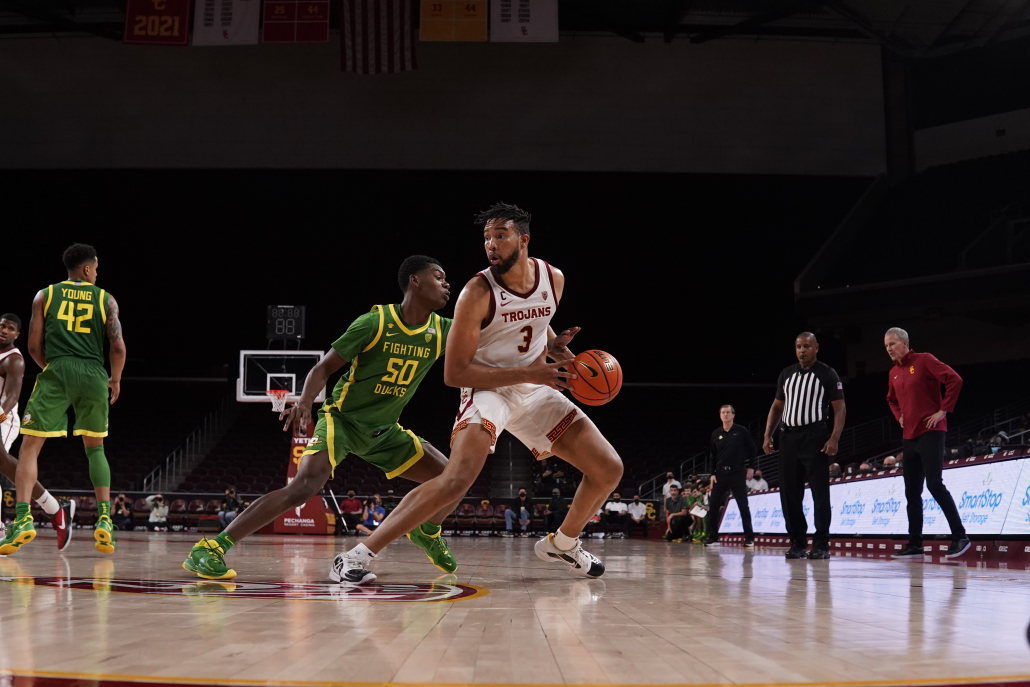Anthony on LA: I was wrong, and I’m here to address it

Last week, I wrote the usual installment of my column — “on all things Los Angeles sports.” If you didn’t read it, I forgive you because you’re here now, and that’s all that matters.
But, if you did read it, well, I messed up, and I’m here to address some things.
See, I wrote that men’s basketball was winning the Pac-12, snapping a drought that’s gone for more than 30 years. What I didn’t know would come next was jinxing to an extensive level.
When my column published, USC lost to Stanford for its first loss of the season. No big deal, it was bound to happen. The Trojans then bounced back with a strong victory at home against Oregon State. Granted, the Beavers had a lead throughout and USC came back to win, but it’s the win that counts.
Then, Oregon came to Galen Center last Saturday after taking down No. 3 UCLA at Pauley Pavillion two days earlier. The Ducks are always a top team in the Pac-12, no matter who’s on the floor.
I expected USC to secure another conference victory since Oregon was coming off a tough battle against UCLA. What happened instead was a 40-minute domination by the Ducks against Trojans that were lost.
The offense stank — in the first half junior forward Isaiah Mobley and junior guard Boogie Ellis combined for 23 of the team’s 29 points. No other Trojan had more than 2 points in the first half, and Ellis had only 4 points in the second half on 2-for-9 shooting.
I highlighted offensive depth in my column and it’s been there for the most part. The problem is in the half court, USC just looks off.
The ball gets stuck; players become a little confused and scoring droughts become prominent. Their defense usually carries them past these problems with stops leading to fast break baskets.
But, at least against the Ducks, that offensive inconsistency hurt them in the end. Ellis couldn’t find his shot too, essentially refuting my case that “the Trojans’ depth makes focusing a defense on Ellis a disadvantage for the opponent.”
USC’s excellent defense was another argument included in my previous column.
I specifically wrote: “The length of these players sets up a defense that looks like an octopus with hands in every single passing lane.”
Solid simile, but oof. At the time of publishing that one, the Trojans held opponents to the third-fewest field goal percentage per game — 35.5%. Since then — oh my God, I need to stop making predictions — all three of USC’s opponents shot over 43%.
Stanford shot 43.9% from the field, plus 41.7% from beyond the arc in its win. Even though the Trojans beat Oregon State, the Beavers still shot 43.5% from the field and a pretty insane 52.9% from the 3-point line. As you might imagine that percentage from three is substantially higher than their season average — 20% higher to be exact.
And then there was Oregon, who shot a blistering 50% from the field and 47.6% from three last Saturday in an upset. Both figures were above its season averages and higher than the Ducks percentages against UCLA two days earlier.
Now, look, obviously I was not the cause of these defensive problems with my column. I spent most of those games stuck in quarantine, not on the floor, and God knows I would only make the defense worse.
However, it seems like lack of practice due to the coronavirus pause hurt some defensive schemes.
The first few practices back from the pause focused on “skills and drills, just to refresh the players’ muscle memory,” according to the L.A. Times. Head Coach Andy Enfield acknowledged that the Trojans had lost a step on defense because of the pause.
“We need to have hard practices, get back to some of the basic practices that we were pretty good at before,” he said in a post game press conference last Saturday.
But, it’s not too bad. Much of those field goal percentage increases can be attributed to hot shooting. The opposing 3-point shooting certainly is difficult to continue, since most of those shots are being contested and are statistically unlikely. Enfield seems confident these defensive problems can be fixed.
Even though I do too, if I’ve learned anything, I won’t jump to any conclusions.
I ended my last column with “USC is winning the Pac-12.” I might have been wrong, but it’s only been a week. A lot of basketball is still left to play. Therefore, I digress and remain confident that the Trojans will figure this out.
And if they don’t, well. I’ll lay off the predictions for now.
Anthony Gharib is a junior writing about all things Los Angeles sports. He is also the sports editor for the Daily Trojan.

